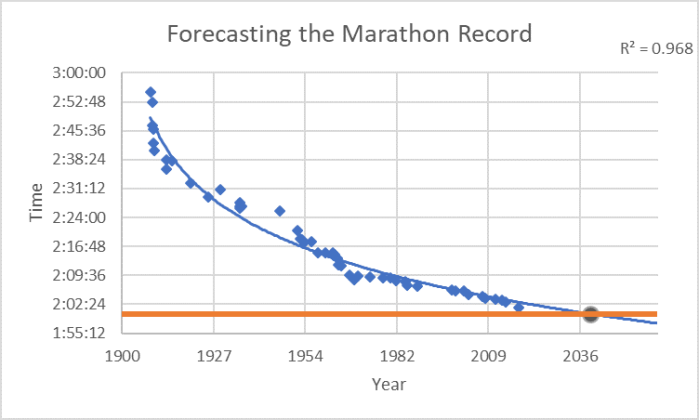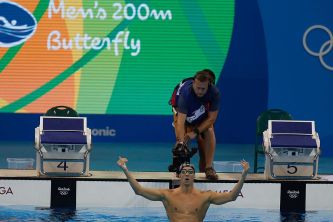The USMNT start their Gold Cup defense against Guyana on June 18th, followed by a long-awaited rematch against the dreaded Trinidad & Tobago on June 22nd, and rounding out the group stage against recent World Cup debutantes Panama on June 26th. All games will be in English of the Fox Channels and in Spanish on the Univision channels.
Berhalter named a 40-man roster and then a 23-man roster. Now that the 23-man roster has been announced, only injury related changes can be made. Any player switched into the 23-man roster must come from the 40 man roster and the switch must be made at least 24 hours before the first game (so before June 17th at 10 PM for the US).
The 40-man roster was mostly expected. There are the young stars (Pulisic, Adams, McKennie, Sargent, Steffen), some members of the Old Guard (Bradley, Altidore, Omar Gonzalez, Guzan), some Berhalter favorites (Trapp, Zardes, Lima, Lewis), some players forged in MLS (Long, Zimmerman, Roldan, M. Robinson, Baird) a few European journeyman (Ream, Miazga, CCV, Holmes, A. Robinson, Horvath) and some curious call-ups (Fossey, Gutman, Gyau, Boyd, Amon). Check out the full list here. Notable absences include Brooks and Yedlin (both injured), Weah (who is with the U-20’s at the U-20 World Cup), and lastly, Novakovich, Wood, K. Accosta, Delgado, Hamid, and Fabian Johnson (presumably not in the plans for Berhalter).
Then Berhalter named a “Summer Training Camp” roster which mixed some fringe senior team players and some U-23 eligible players (The Olympics is a U-23 competition, and the US has not qualified in the last two cycles). Then Berhalter named a 29-man roster of players who would train for a friendly against Jamaica. This friendly was essentially used as a tryout for the final 23-man Gold Cup roster which came the next day.
Before I breakdown the final 23-man roster, I want note the odd “Summer Training Camp” roster. I believe this camp served two purposes: 1. Introduce the Berhalter system to some players who have yet to play in it, and 2. Provide an opportunity for U-23 players to train with senior national team players. I like the idea of U-23 players getting tested against some older guys, and I like the idea of some older guys getting more reps with Berhalter. All in all, I’m about this summer camp. Since then, there is a U-23 roster training in Utah while the senior team bounces around the country in the Gold Cup. Definitely like the U-23 team getting together early and often to learn Berhalter’s systems.
Now to the official Gold Cup Roster (Club;Caps/Goals):
Players replaced due to injury are crossed out
GOALKEEPERS (3): 12-Sean Johnson (New York City FC; 7/0), 22-Tyler Miller (LAFC; 0/0), 1-Zack Steffen (Columbus Crew SC; 10/0)
DEFENDERS (8): 14-Tyler Adams (RB Leipzig/GER; 10/1) [Replaced by Reggie Cannon], 3-Omar Gonzalez (Toronto FC/CAN; 50/3), 2-Nick Lima (San Jose Earthquakes; 4/0), 23-Aaron Long (New York Red Bulls; 6/0), 16-Daniel Lovitz (Montreal Impact/CAN; 5/0), 19-Matt Miazga (Chelsea/ENG; 14/1),
13-Tim Ream (Fulham/ENG; 30/1), 5-Walker Zimmerman (LAFC; 7/2)
MIDFIELDERS (6): 4-Michael Bradley (Toronto FC/CAN; 145/17), 20-Duane Holmes (Derby County/ENG; 2/0) [Replaced by Djorde Mihailovic], 8-Weston McKennie (Schalke/GER; 9/1), 10-Christian Pulisic (Chelsea/ENG; 25/10), 15-Cristian Roldan (Seattle Sounders FC; 11/0), 6-Wil Trapp (Columbus Crew SC; 17/0)
FORWARDS (6): 17-Jozy Altidore (Toronto FC/CAN; 111/41), 7-Paul Arriola (D.C. United; 23/3), 21-Tyler Boyd (Vitória Guimãres/POR; 1/0), 18-Jonathan Lewis (Colorado Rapids; 4/0), 11-Jordan Morris (Seattle Sounders FC; 28/5), 9-Gyasi Zardes (Columbus Crew SC; 45/7)
The internet believes the most notable omission here is Josh Sargent. Berhalter defended his decision saying he like Zardes more than Sargent right now and that Sargent could gain more from getting a full preseason in with Werder Bremen. I don’t love Sargent being left off but I’m not outraged by it either. I think Amon also had a good shot at making this team which is relatively thin on quality wingers.
Against Venezuela on Sunday, the team got smacked with a 3-0 loss. They were missing Bradley, Pulisic, and Adams while Altidore only played the second half. Those are 4 of the US’ 7 most important players (the others being Steffen, Brooks, and McKennie). Plus this was Aaron Long’s first game back from a month of injury. I’m not trying to make excuses for the US, as a 3-0 loss is unacceptable in most cases, but there are some reasons as to why the team might have under-performed. And luckily, none of the United States’ group stage opponents are ranked top-30 in the world like Venezuela currently is (Stu Holden, on the call for the USA v. VEN match, wasn’t giving that Venezuela team enough credit; they defeated Argentina earlier this year for a reason). I believe that the team will look a lot better after a full week of practice together.
Pulisic joined this group late, and did not play in the Venezuela warm-up game. Adams and Holmes, two of the more exciting prospects, left camp due to injuries. Since the first Gold Cup game is against minnows Guyana, I would not be shocked if a few starters on this team rest. So here is the team I expect Berhalter to play against T&T and Panama in the 2nd and 3rd games:
Altidore
Arriola – Pulisic – McKennie – Boyd
Bradley
Ream – Miazga – Zimmerman – Lima
Steffen
I’m pretty convinced Bradley has to start over Trapp, and Altidore has to start over Zardes. We might see Long in for Zimmerman, if Long get’s up to speed. Otherwise I think this is Berhalter’s ideal starting XI for this tournamnet. Remember this is Berhalter’s special formation where Lima joins Bradley on the defensive midfield line in attack, and the wingers push high to the forward line with Altidore. Although, without Adams in that hybrid RB/CM position, we might see a totally different structure on the field.
I am interested to see how this group plays against some CONCACAF teams in official competition. However, I would like to see a similar line-up with a few tweaks in order to put out best players in their best positions. Given this roster, I want to see Pulisic pushed out wide, where he played regularly for Dortmund. Without Holmes or Lletget on the roster, I guess I’m putting Mihailovic or Roldan where Pulisic is currently. I’d also like to see McKennie play deeper in the midfield. I believe McKennie plays best when he is transitioning the ball from defense to attack. Playing him deeper in the midfield allows him to do that. Lastly, I would put Adams in the defensive midfield, where he has played for RB Leipzig, if he were healthy and on this roster. For now, Bradley will do.
A good time to try something new/different would be in the US’s first game against Guyana. I know we shouldn’t be experimenting in an official competition, but I think a slightly experimental lineup could still roll the Guyana team. Specifically this is a set-up I’d like Berhalter to try (if not in this tournament, at some point):
Altidore
Pulisic – Mihailovic/Roldan – Boyd
Bradley – McKennie
Lovitz – Miazga – Zimmerman – Lima
Steffen
Notice I also swapped for Lovitz at LB because I see him as more of a natural LB than Ream, and in this set-up, I wouldn’t have Lima push up making the back-4 into a back-3. We might see some experimentation like this in the group stage. It’s hard to project who will play in the knockout round, as roster decisions will likely be based on form in the group stage. Maybe Tyler Boyd lights the world aflame, or Long comes back into form, or there’s some catastrophic injury that changes the whole set-up.
Come back after the Group Stage and the Final for reviews of the USMNT’s performance!




